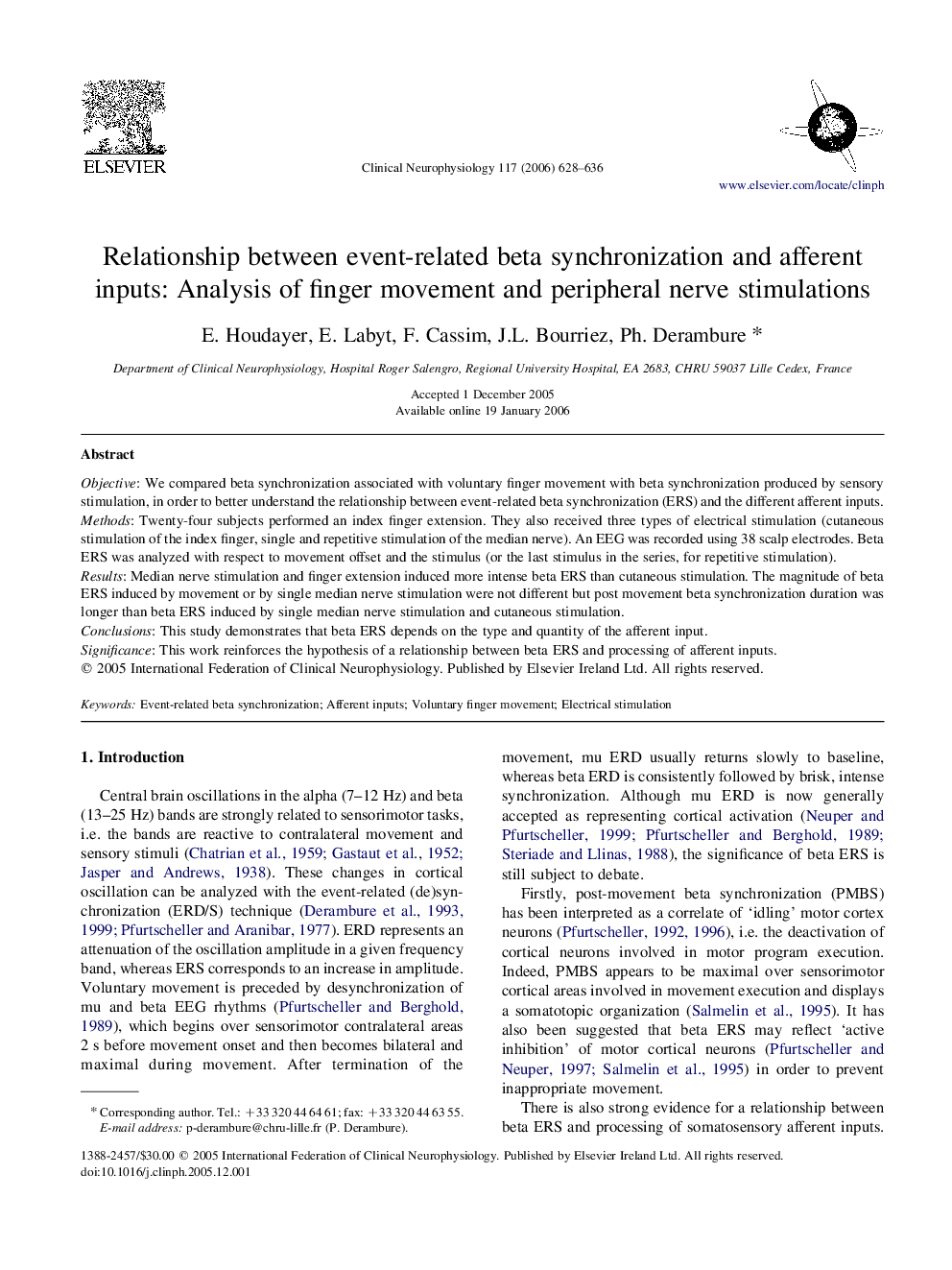| Article ID | Journal | Published Year | Pages | File Type |
|---|---|---|---|---|
| 3048433 | Clinical Neurophysiology | 2006 | 9 Pages |
ObjectiveWe compared beta synchronization associated with voluntary finger movement with beta synchronization produced by sensory stimulation, in order to better understand the relationship between event-related beta synchronization (ERS) and the different afferent inputs.MethodsTwenty-four subjects performed an index finger extension. They also received three types of electrical stimulation (cutaneous stimulation of the index finger, single and repetitive stimulation of the median nerve). An EEG was recorded using 38 scalp electrodes. Beta ERS was analyzed with respect to movement offset and the stimulus (or the last stimulus in the series, for repetitive stimulation).ResultsMedian nerve stimulation and finger extension induced more intense beta ERS than cutaneous stimulation. The magnitude of beta ERS induced by movement or by single median nerve stimulation were not different but post movement beta synchronization duration was longer than beta ERS induced by single median nerve stimulation and cutaneous stimulation.ConclusionsThis study demonstrates that beta ERS depends on the type and quantity of the afferent input.SignificanceThis work reinforces the hypothesis of a relationship between beta ERS and processing of afferent inputs.
